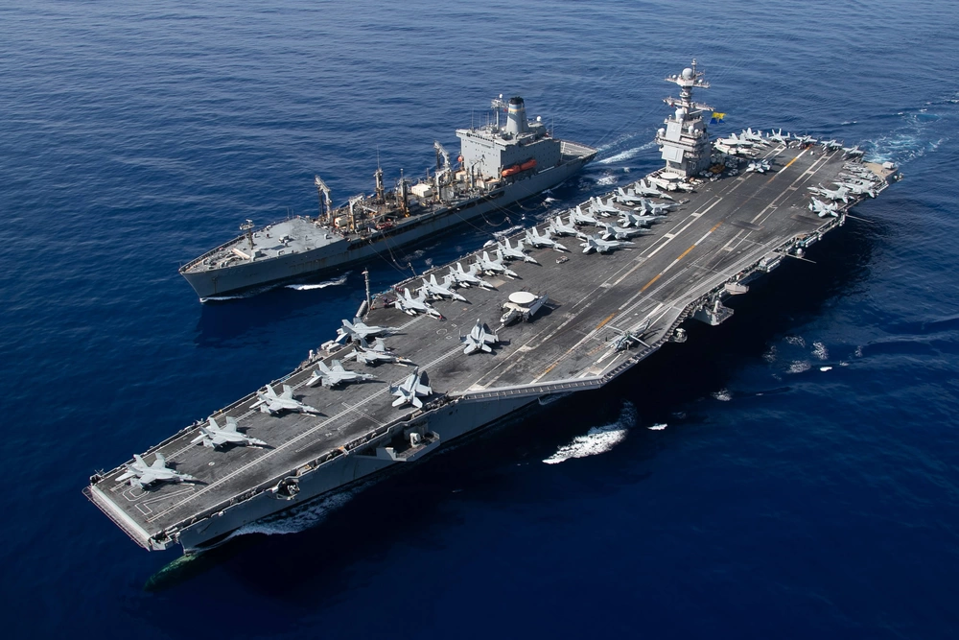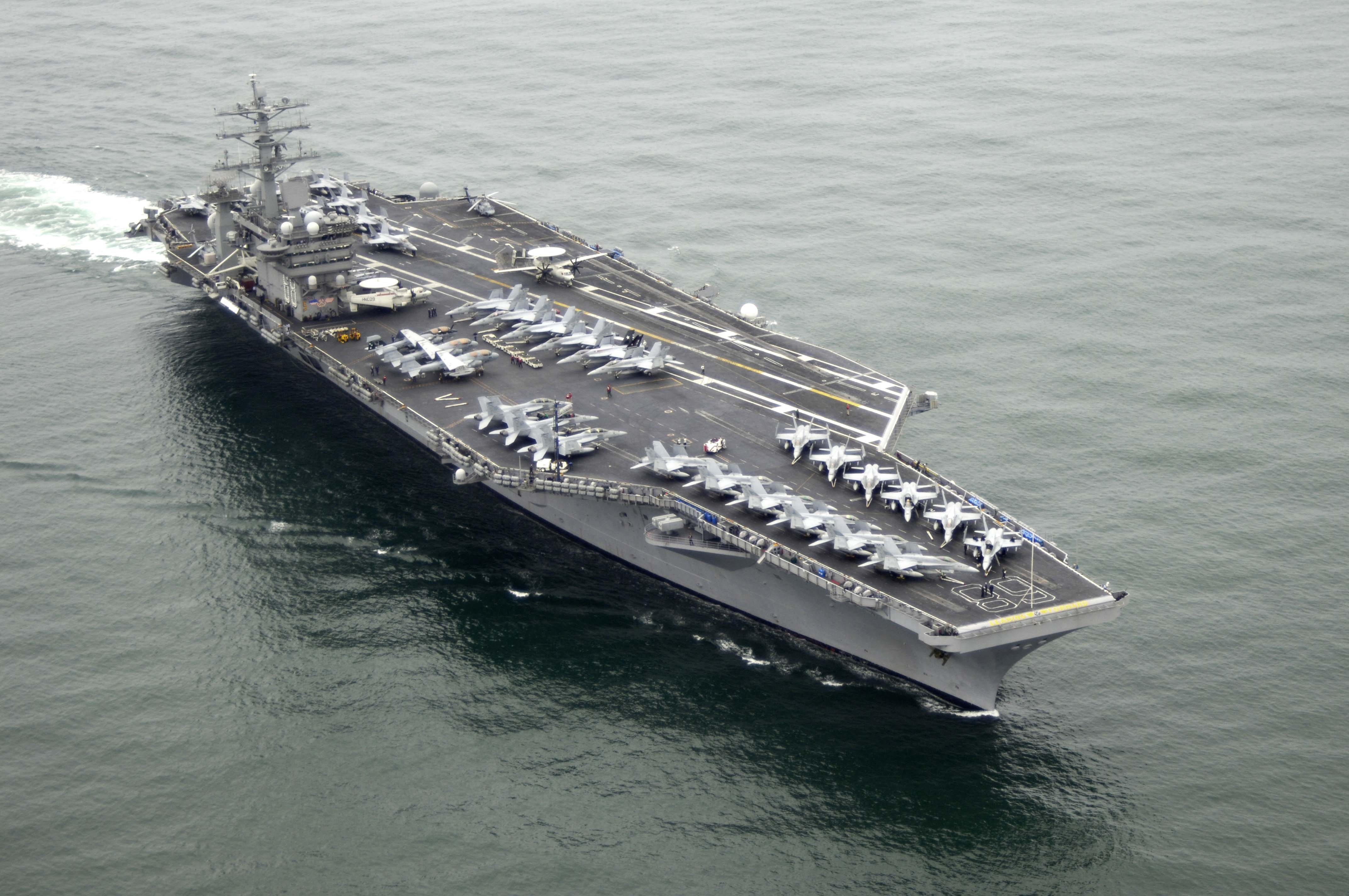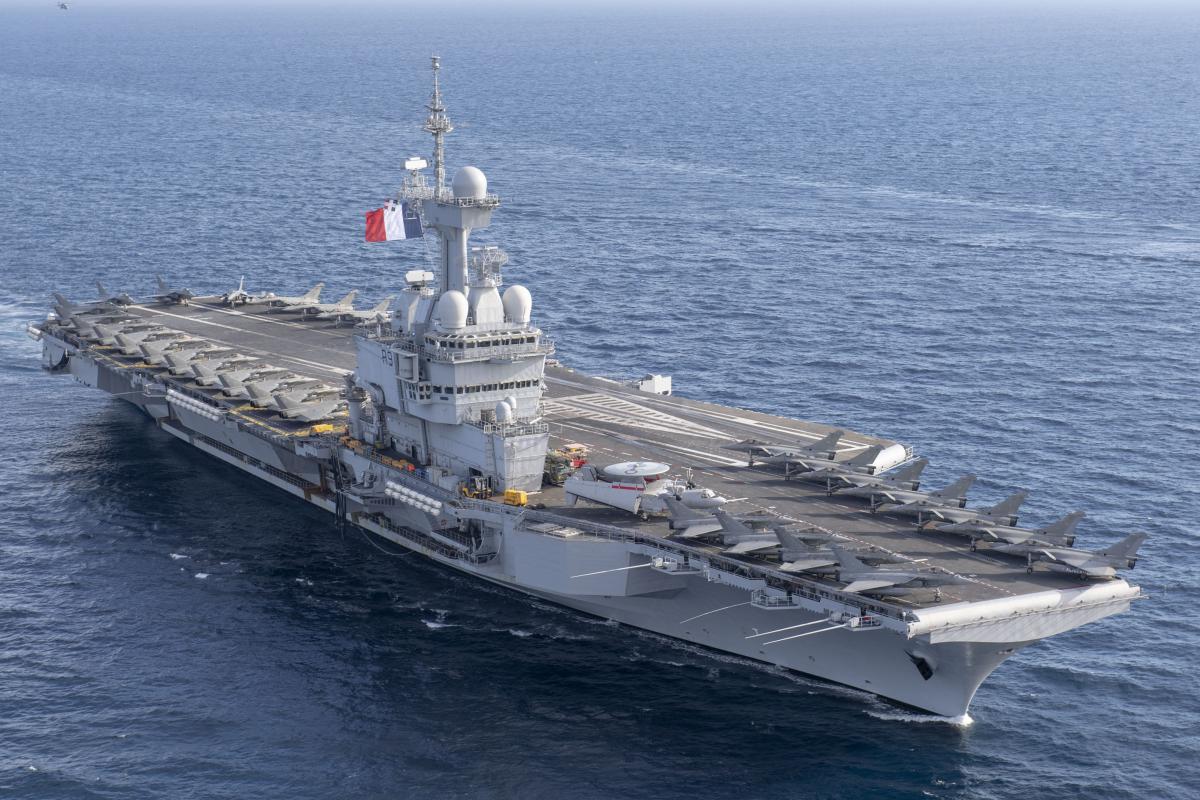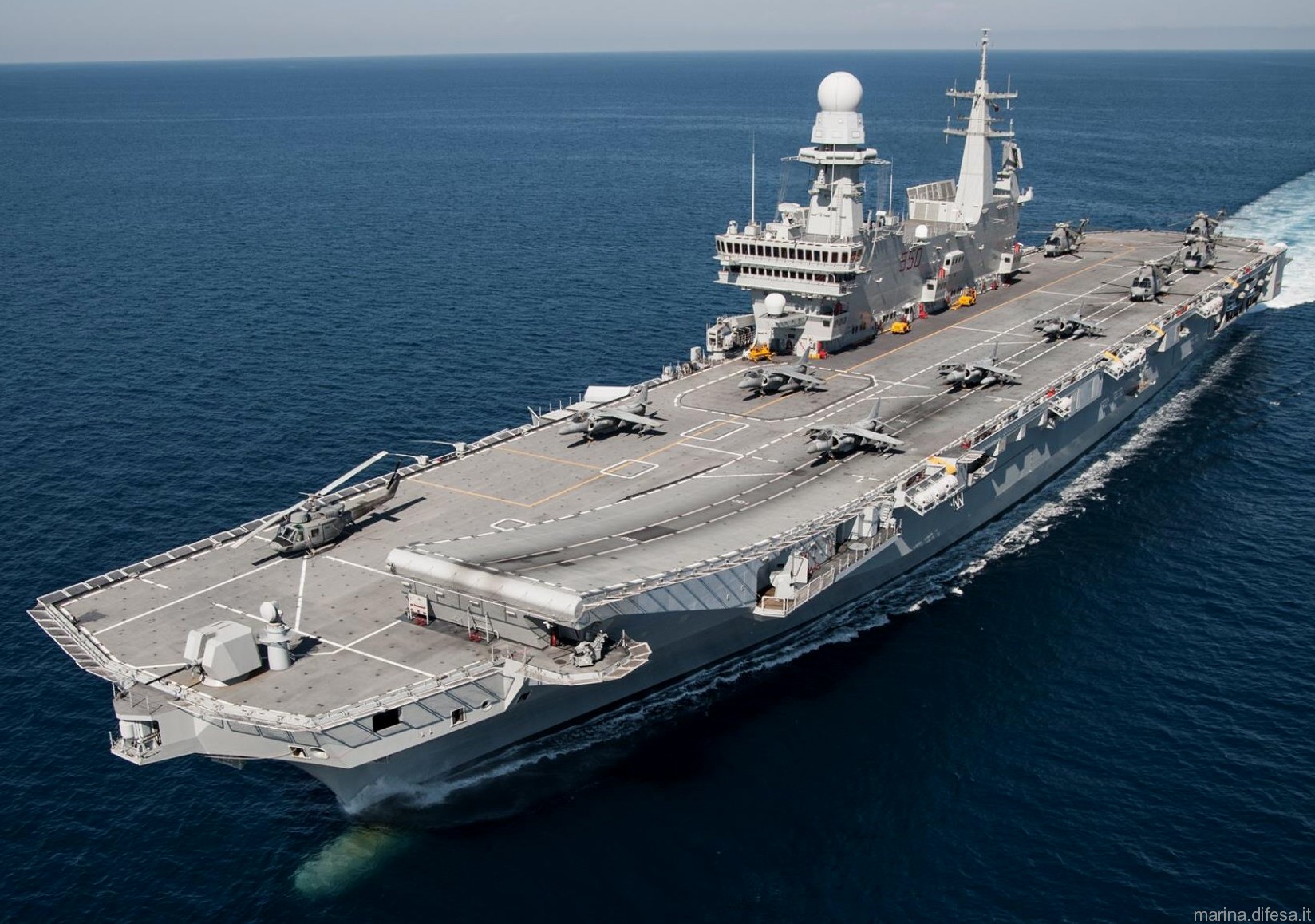Warships can change the course of battles, but none match the reach and strength of an aircraft carrier. These floating airbases bring fighter jets and helicopters to places thousands of miles from home.
Each carrier on this list is more than just a ship. It is a moving city with a runway, advanced weapons, and the ability to launch air missions at a moment’s notice. From the United States to Italy, these carriers show the height of naval engineering.
Knowing what makes these carriers powerful helps us understand why they are so important for national defense. Size, technology, range, and air power all combine to make them the strongest warships at sea.
Top 10 Most Powerful Aircraft Carriers
I have made a list of the ten most powerful aircraft carriers, based on size, technology, aircraft capacity, and combat power.
- USS Gerald R. Ford (CVN-78) – Largest and most advanced carrier with cutting-edge launch systems and nuclear power.
- USS Nimitz (CVN-68) Class – Proven nuclear-powered workhorse with decades of combat capability and high aircraft capacity.
- HMS Queen Elizabeth – Modern design with advanced radar and ability to operate F-35B stealth fighters.
- Charles de Gaulle – France’s nuclear-powered flagship with long-range endurance and strong air wing.
- Liaoning (Type 001) – China’s first carrier, boosting its naval power projection in the region.
- Shandong (Type 002) – Improved Chinese-built carrier with larger deck and higher aircraft capacity.
- INS Vikramaditya – India’s largest warship with modern fighters and regional power projection.
- INS Vikrant – India’s first home-built carrier with modern systems for regional security.
- Admiral Kuznetsov – Russia’s only carrier, combining aircraft operations with heavy missile armament.
- Cavour (CVH 550) – Italy’s versatile flagship, capable of operating F-35B jets and supporting NATO missions.
Let’s look at the top ten most powerful aircraft carriers and see how each one holds its place among the best in the world.
1. USS Gerald R. Ford (CVN-78) – United States
The USS Gerald R. Ford is the largest and most advanced aircraft carrier in the world. USS Gerald R. Ford (CVN-78) runs on nuclear power and can sail for over 20 years without refueling.

| Feature | Details |
|---|---|
| Country | United States |
| Power Source | Nuclear |
| Year Commissioned | 2017 |
| Aircraft Capacity | 75+ |
| Key Technology | Electromagnetic Aircraft Launch System (EMALS) |
| Crew Size | ~4,500 |
This ship has the newest launch system called EMALS, which uses electromagnetic power instead of steam to launch aircraft.
It can carry more than 75 aircraft and has a crew of about 4,500 people. The Ford also has better radar, improved weapons elevators, and a design that needs fewer crew members compared to older carriers.
2. USS Nimitz (CVN-68) Class – United States
The Nimitz-class carriers have served for decades and are still among the most powerful warships afloat. These nuclear-powered carriers can hold around 60 aircraft, including fighters, bombers, and helicopters.

| Feature | Details |
|---|---|
| Country | United States |
| Power Source | Nuclear |
| Year Commissioned | 1975 (first ship) |
| Aircraft Capacity | ~60 |
| Key Technology | Advanced radar and defensive missile systems |
| Crew Size | ~5,000 |
They can operate for 20 years without refueling and have strong defensive systems like missile interceptors and close-in weapon systems.
Many of the US Navy’s major missions over the last 40 years have been launched from Nimitz-class decks.
3. HMS Queen Elizabeth – United Kingdom
HMS Queen Elizabeth is the largest warship ever built for the Royal Navy. It uses a ski-jump ramp to launch F-35B Lightning II stealth fighters.

| Feature | Details |
|---|---|
| Country | United Kingdom |
| Power Source | Gas turbines & diesel generators |
| Year Commissioned | 2017 |
| Aircraft Capacity | ~40 |
| Key Technology | Ski-jump ramp for F-35B stealth fighters |
| Crew Size | ~1,600 (including air wing) |
The carrier can hold about 40 aircraft and has advanced radar systems to detect threats from hundreds of miles away. It runs on gas turbines and diesel generators, giving it flexibility and range.
Its design allows quick aircraft launches and recoveries, making it a strong tool for global missions.
4. Charles de Gaulle – France
Charles de Gaulle is France’s only nuclear-powered aircraft carrier. It can operate about 40 aircraft, including Rafale M fighters and E-2C Hawkeye radar planes.

| Feature | Details |
|---|---|
| Country | France |
| Power Source | Nuclear |
| Year Commissioned | 2001 |
| Aircraft Capacity | ~40 |
| Key Technology | Supports Rafale M fighters and E-2C Hawkeye |
| Crew Size | ~1,950 |
The ship has taken part in missions against piracy, terrorism, and during conflicts in the Middle East. With nuclear power, it can sail for long periods without refueling, and it is heavily armed with surface-to-air missiles and close-defense guns.
5. Liaoning (Type 001) – China
Liaoning is China’s first aircraft carrier, converted from a Soviet ship. It uses a ski-jump ramp for launching aircraft and can carry around 40 planes, mostly J-15 fighter jets.

| Feature | Details |
|---|---|
| Country | China |
| Power Source | Conventional (oil-fired) |
| Year Commissioned | 2012 |
| Aircraft Capacity | ~40 |
| Key Technology | Ski-jump ramp for J-15 fighters |
| Crew Size | ~2,500 |
While it is less advanced than some Western carriers, it has been a major step for China’s growing naval power. Liaoning is used for training, but it can also carry out real combat missions.
6. Shandong (Type 002) – China
Shandong is China’s first home-built aircraft carrier. It is similar in design to Liaoning but with improvements. It has a larger flight deck, better aircraft handling systems, and can carry more fuel and ammunition.

| Feature | Details |
|---|---|
| Country | China |
| Power Source | Conventional (oil-fired) |
| Year Commissioned | 2019 |
| Aircraft Capacity | ~44 |
| Key Technology | Larger flight deck than Liaoning |
| Crew Size | ~2,500 |
The ship can hold around 44 aircraft and plays a key role in China’s plans to expand its naval operations in the Pacific and Indian Oceans.
7. INS Vikramaditya – India
INS Vikramaditya is India’s largest warship. It was originally built in Russia and later upgraded for the Indian Navy. It can carry about 30 aircraft, including MiG-29K fighters and helicopters for anti-submarine warfare.

| Feature | Details |
|---|---|
| Country | India |
| Power Source | Conventional (oil-fired) |
| Year Commissioned | 2013 |
| Aircraft Capacity | ~30 |
| Key Technology | Ski-jump ramp for MiG-29K fighters |
| Crew Size | ~1,600 |
Vikramaditya has a ski-jump ramp and arrestor wires to launch and recover planes. It has been active in joint exercises with the navies of the United States, Japan, and Australia.
8. INS Vikrant – India
INS Vikrant is India’s first locally built aircraft carrier. Commissioned in 2022, it can carry about 30 aircraft and has modern radar and weapon systems.

| Feature | Details |
|---|---|
| Country | India |
| Power Source | Conventional (oil-fired) |
| Year Commissioned | 2022 |
| Aircraft Capacity | ~30 |
| Key Technology | Supports both fighters and helicopters |
| Crew Size | ~1,700 |
The ship’s design allows it to operate both fixed-wing fighters and helicopters. With Vikrant, India now has two active carriers, increasing its ability to secure sea lanes in the Indian Ocean.
9. Admiral Kuznetsov – Russia
Admiral Kuznetsov is Russia’s only aircraft carrier. It carries about 40 aircraft, including Su-33 and MiG-29K fighters. The ship also has heavy missile launchers, which is unusual for an aircraft carrier.

| Feature | Details |
|---|---|
| Country | Russia |
| Power Source | Conventional (oil-fired) |
| Year Commissioned | 1991 |
| Aircraft Capacity | ~40 |
| Key Technology | Heavy missile armament plus aircraft |
| Crew Size | ~1,960 |
Kuznetsov has taken part in combat operations in Syria. It uses a ski-jump ramp and has been undergoing repairs and upgrades to extend its service life.
10. Cavour (CVH 550) – Italy
Cavour is Italy’s flagship and can carry both aircraft and marines. It can hold around 30 aircraft, including F-35B stealth fighters. The ship supports NATO missions and humanitarian operations.

| Feature | Details |
|---|---|
| Country | Italy |
| Power Source | Conventional (diesel & gas turbines) |
| Year Commissioned | 2008 |
| Aircraft Capacity | ~30 |
| Key Technology | Operates F-35B jets and helicopters |
| Crew Size | ~1,200 |
It has modern defense systems, a flight deck for vertical takeoff jets, and space for helicopters and troop transport.
Key Features That Make a Carrier Powerful
Several features separate a strong carrier from a weak one. Size matters because a larger deck allows more aircraft to operate at once.
Nuclear power gives a carrier unlimited range for decades, while conventional power limits travel between refueling. Advanced radar and weapon systems are needed to detect and stop threats before they get close.
The number and type of aircraft onboard also make a difference, since more planes mean more striking power and better defense.
Why These Ten Stand Out?
Every carrier on this list can project power far from home. They can launch air strikes, support troops, and protect shipping lanes. They are also symbols of national strength. Countries with these carriers can respond quickly to threats anywhere in the world. The combination of aircraft capacity, technology, and self-defense systems makes these ships the most powerful of their kind.
These ten aircraft carriers are the strongest in service today. They combine size, advanced technology, and the ability to launch powerful aircraft anywhere in the world. Each one gives its navy the reach to protect national interests far from home, respond to crises, and support allies. Together, they show how important carriers are for controlling the seas.







